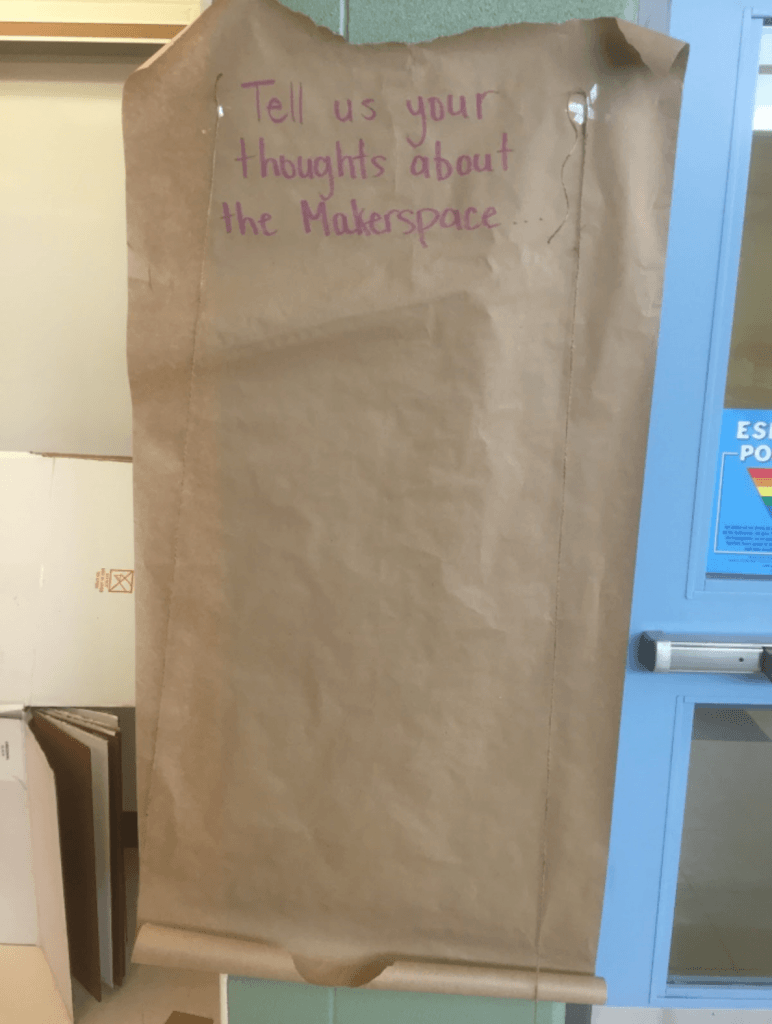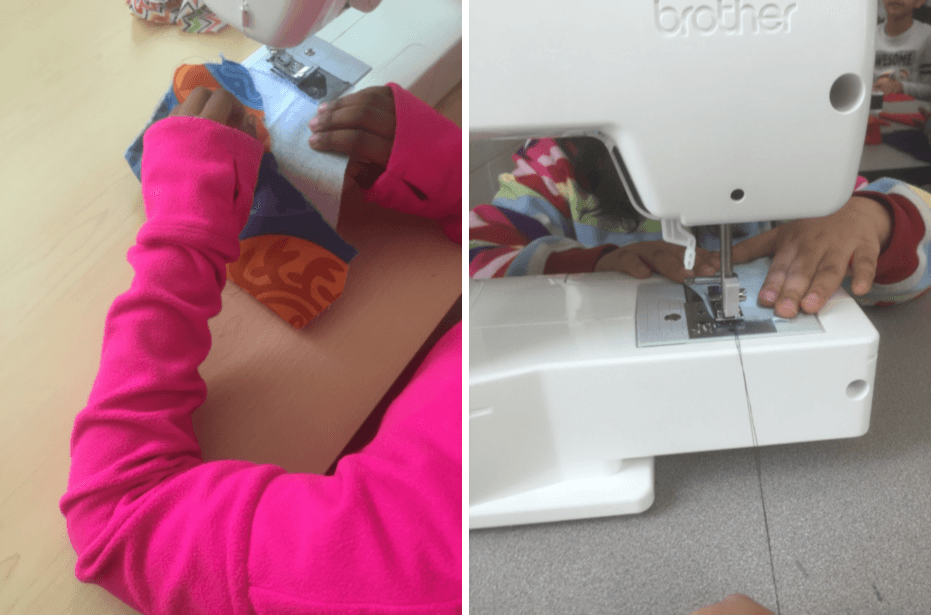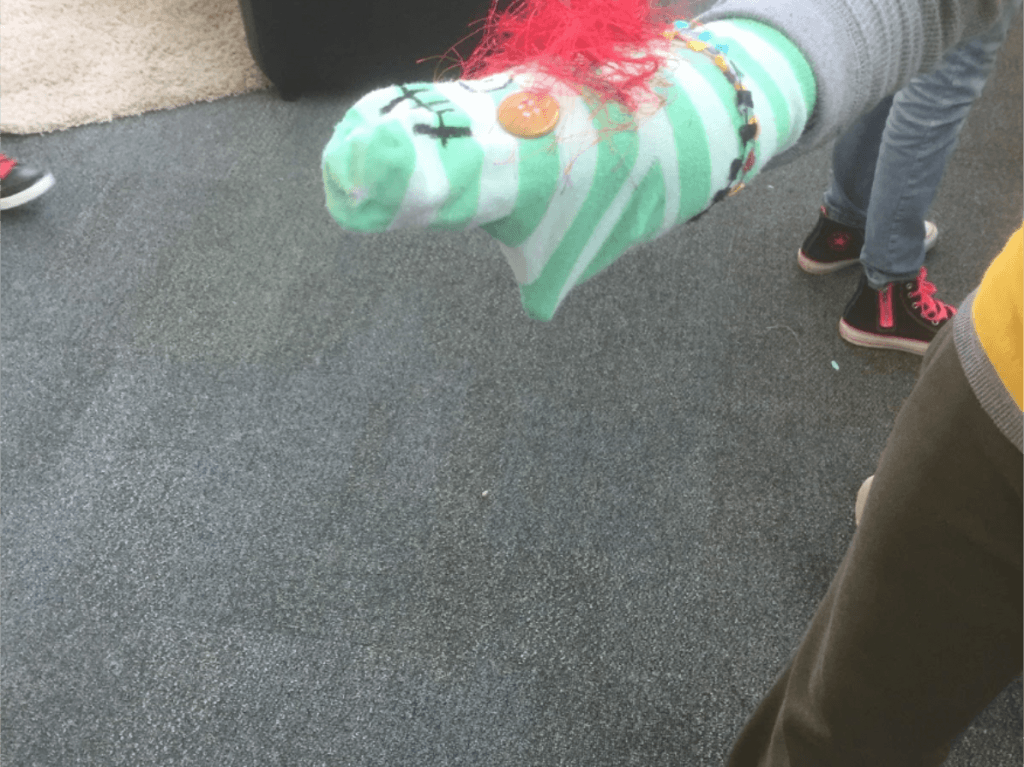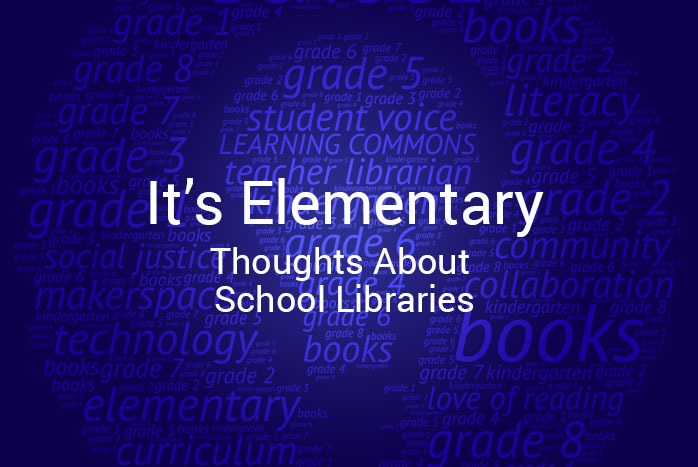I am intrigued with the work of fabulous secondary teacher librarian, Jonelle St. Aubyn. Her practice is both familiar and innovative.

Uncovering the “truth” about makerspace
When given the opportunity to return to the teacher librarian role in recent years, I knew that including a makerspace was on everybody’s library “to do” list.
But here is the truth – I had no idea where to begin! I felt overwhelmed and honestly a bit intimidated. I assumed that everyone else had a deeper understanding of the maker movement and how makerspaces could enhance a school learning environment. I also made the assumption that successful makerspaces existed only if the teacher librarian had significant knowledge of and experience with high tech opportunities likes coding, robotics and 3D printing. I questioned if the mere use of the word “maker” implied a value of product over process. I wanted to embrace new ideas and technologies as part of our evolving learning commons yet I felt completely out of my league.
And then I began to wonder …
Is makerspace an essential addition to the library learning commons? or is it a trendy phase?
So I began my journey to figure out this mysterious and popular movement known as makerspace.
I have written many blog posts of my own, detailing our makerspace journey but, in the interest of brevity let me venture to share an overview.
- I looked for and continue to gather a variety of resources to develop my own understanding of makerspaces. These included but, were certainly not limited to the following:
Twitter connections:
- Diana Redina @DianaLRendina
- Laura Fleming @NMHS_lms
- Pamayah @Mister_Library
- S @MrSchuermann
- Melanie Mulcaster @the_mulc
- Diana Malizewski @MzMollyTL
Print resources:
- Worlds of Making by Laura Fleming
- Invent to Learn: Making, Tinkering & Engineering in the Classroom by Gary S. Stager & Sylvia Libow Martinez
- The Art of Tinkering by Karen Wilkinson
- The Third Teacher: 79 Ways You Can Use Design to Transform Teaching & Learning by OWP/P Cannon Design Inc.
- The Big Book of Makerspace Projects by Colleen & Aaron Graves
- Launch: Using Design Thinking to Boost Creativity and Bring Out the Maker in Every Student by John Spencer & A.J. Juilani
Human library and networking opportunities:
- With an open invitation to all staff, a group of us gathered together to explore and discuss the concept of makerspaces and ideas for bringing it to our school community. From this conversation, we decided the following:
- Student voice and interests needed to be at the center of our planning.
- We wanted to offer both low and high tech experiences for our students.
- We reminded each other to pace ourselves and resist the urge to buy tech simply because it was “cool”.
- We planned a four day maker event for all of our students and staff to experience a variety of “maker” stations. This experience included the unveiling of our LEGO wall, sewing, coding apps, origami, a disassembly station, loom knitting, sock puppet making and much more. During the event, large sheets of brown craft paper were hung on the walls for staff and students to offer feedback about their experience.
- Based on the feedback received from our four day event, we began offering “Maker Monday” workshops developed around a variety of low tech and tech-based skills. Students of all ages signed up using Google Forms and each Monday we offered an 80-minute introductory session. As this evolved, we began to receive a greater increase in responses (almost 200 children for our session on learning how to sew). Although this was wonderful, it became a logistical challenge.

- Currently our makerspace has become a once a day, 40-minute free flow experience that we are calling Open Learning. We have created a Google Site which ideally will become a collaborative space for students to share their knowledge and maker experiences with our school community.
Through this process, I can truly say that embracing a maker mindset and offering a makerspace learning experience is essential to our library learning commons.

A few key ideals guide the work for our school community:
- Fostering a makerCULTURE throughout the school is much more important than the actual makerSPACE.
- Student voice & interests remain at the center of our decisions around every aspect of makerspace.
- To ensure value is placed on the experiences makerspace learning can offer we use dedicated instructional time for students to access the tools and materials.
The biggest impact on our school is the realization that makerspace is really all about creating COMMUNITY. When our students recognize that they are at the center of the learning, they take ownership and responsibility for themselves and the entire learning community.
The “truth” I have uncovered about makerspace is that there is no “right” way to create one in your school. Each school community is unique and therefore each makerspace should reflect that uniqueness. This also means that it will not stay the same year to year.

So, if you are feeling trepidatious about embracing makerspace in your school library I would encourage you to begin.
- Start your own journey.
- Discover your students’ interests.
- Build your own maker community.
More than anything – feel confident that creating a makerspace that reflects your students and school community will always be more than a trendy phase, even if it changes over time.
Jennifer Brown is the Teacher Librarian at the Castle Oaks Public School in the Peel District School Board. It’s Elementary: Thoughts About School Libraries is a regular column on Open Shelf. Jenn can be reached at jennifer.m.brown [at] peelsb.com and by following her Twitter account @JennMacBrown.
This Post Has One Comment
Comments are closed.

[…] mindset can affect the library; and RDA in many metadata formats, or RIMMF. Also, what is the role of the makerspace and how to build them in a school […]